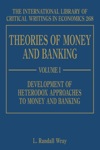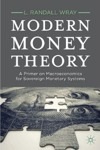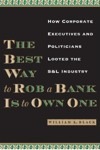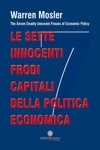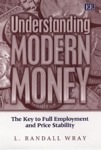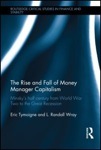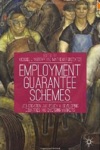The details of the SEC’s case will be familiar to anyone who knows about Magnetar. This hedge fund sought the very worst subprime mortgage backed securities (MBS) to package as collateralized debt obligations (CDO). The firm nearly single-handedly kept the subprime market afloat after investors started to worry about Liar and NINJA loans, since Magnetar was offering to take the very worst tranches—making it possible to sell the higher-rated tranches to other more skittish buyers. And Magnetar was quite good at identifying trash: According to an analysis commissioned by ProPublica, 96% of the CDO deals arranged by Magnetar were in default by the end of 2008 (versus “only” 68% of comparable CDOs). The CDOs were then sold-on to investors, who ultimately lost big time. Meanwhile, Magnetar used credit default swaps (CDS) to bet that the garbage CDOs they were selling would go bad. Actually, that is not a bet. If you can manage to put together deals that go bad 96% of the time, betting on bad is as close to a sure thing as a financial market will ever find. So, in reality, it was just pick pocketing customers—in other words, a looting.
Well, Magnetar was a hedge fund, and as they say, the clients of hedge funds are “big boys” who are supposed to be sophisticated and sufficiently rich that they can afford to lose. Goldman Sachs, by contrast, is a 140 year old firm that operates a revolving door to keep the US Treasury and the NY Fed well-stocked with its alumni. As Matt Taibi has argued, Goldman has been behind virtually every financial crisis the US has experienced since the Civil War. In John Kenneth Galbraith’s “The Great Crash”, a chapter that documents Goldman’s contributions to the Great Depression is titled “In Goldman We Trust”. As the instigator of crises, it has truly earned its reputation. And it has been publicly traded since 1999—an unusual hedge fund, indeed. Furthermore, Treasury Secretary Geithner handed it a bank charter to ensure it would have cheap access to funds during the financial crisis. This gave it added respectability and profitability—one of the chosen few anointed by government to speculate with Treasury funds. So, why did Goldman use its venerable reputation to loot its customers?
Before 1999, Goldman (like the other investment banks) was a partnership—run by future Treasury Secretary Hank Paulson. The trouble with that arrangement is that it is impossible to directly benefit from a run-up of the stock market. Sure, Goldman could earn fees by arranging initial public offerings for Pets-Dot-Com start-ups, and it could trade stocks for others or for its own account. This did offer the opportunity to exploit inside information, or to monkey around with the timing of trades, or to push the dogs onto clients. But in the euphoric irrational exuberance of the late 1990s that looked like chump change. How could Goldman’s management get a bigger share of the action?
Flashback to the 1929 stock market boom, when Goldman faced the same dilemma. Since the famous firms like Goldman Sachs were partnerships, they did not issue stock; hence they put together investment trusts that would purport to hold valuable equities in other firms (often in other affiliates, which sometimes held no stocks other than those in Wall Street trusts) and then sell shares in these trusts to a gullible public. Effectively, trusts were an early form of mutual fund, with the “mother” investment house investing a small amount of capital in their offspring, highly leveraged using other people’s money. Goldman and others would then whip up a speculative fever in shares, reaping capital gains through the magic of leverage. However, trust investments amounted to little more than pyramid schemes—there was very little in the way of real production or income associated with all this trading in paper. Indeed, the “real” economy was already long past its peak—there were no “fundamentals” to drive the Wall Street boom. It was just a Charles Ponzi-Bernie Madoff scam. Inevitably, Goldman’s gambit collapsed and a “debt deflation” began as everyone tried to sell out of their positions in stocks—causing prices to collapse. Spending on the “real economy” suffered and we were off to the Great Depression. Sound familiar?
So in 1999 Goldman and the other partnerships went public to enjoy the advantages of stock issue in a boom. Top management was rewarded with stocks—leading to the same pump-and-dump incentives that drove the 1929 boom. To be sure, traders like Robert Rubin (another Treasury secretary) had already come to dominate firms like Goldman. Traders necessarily take a short view—you are only as good as your last trade. More importantly, traders take a zero-sum view of deals: there will be a winner and a loser, with Goldman pocketing fees for bringing the two sides together. Better yet, Goldman would take one of the two sides—the winning side, of course–and pocket the fees and collect the winnings. You might wonder why anyone would voluntarily become Goldman’s client, knowing that the deal was ultimately zero-sum and that Goldman would have the winning hand? No doubt there were some clients with an outsized view of their own competence or luck; but most customers were wrongly swayed by Goldman’s reputation that was being exploited by hired management. The purpose of a good reputation is to exploit it. That is what my colleague, Bill Black, calls control fraud.
Note that before it went public, only 28% of Goldman’s revenues came from trading and investing activities. That is now about 80% of revenue. While many think of Goldman as a bank, it is really just a huge hedge fund, albeit a very special one that happens to hold a Timmy Geithner-granted bank charter—giving it access to the Fed’s discount window and to FDIC insurance. That, in turn, lets it borrow at near-zero interest rates. Indeed, in 2009 it spent only a little over $5 billion to borrow, versus $26 billion in interest expenses in 2008—a $21 billion subsidy thanks to Goldman’s understudy, Treasury Secretary Geithner. It was (until Friday) also widely believed to be “backstopped” by the government—under no circumstances would it be allowed to fail, nor would it be restrained or prosecuted—keeping its stock price up. That is now somewhat in doubt, causing prices to plummet. Of course, the FDIC subsidy is only a small part of the funding provided by government—we also need to include the $12.9 billion it got from the AIG bail-out, and a government guarantee of $30 billion of its debt. Oh, and Goldman’s new $2 billion headquarters in Manhattan? Financed by $1.65 billion of tax free Liberty Bonds (interest savings of $175 million) plus $66 million of employment and energy subsidies. And it helps to have your people run three successive administrations, of course.
Unprecedented and unprecedentedly useful if one needs to maintain reputation in order to run a control fraud.
In the particular case prosecuted by the SEC, Goldman created synthetic CDOs that placed bets on toxic waste MBSs. A synthetic CDO does not actually hold any mortgage securities—it is simply a pure bet on a bunch of MBSs. The purchaser is betting that those MBSs will not go bad, but there is an embedded CDS that allows the other side to bet that the MBSs will fall in value, in which case the CDS “insurance” pays off. Note that the underlying mortgages do not need to go into default or even fall into delinquency. To make sure that those who “short” the CDO (those holding the CDS) get paid sooner rather than later, all that is required is a downgrade by credit rating agencies. The trick, then, is to find a bunch of MBSs that appear to be over-rated and place a bet they will be downgraded. Synergies abound! The propensity of credit raters to give high ratings to junk assets is well-known, indeed assured by paying them to do so. Since the underlying junk is actually, well, junk, downgrades are also assured. Betting against the worst junk you can find is a good deal—if you can find a sucker to take the bet.
The theory behind shorting is that it lets you hedge risky assets in your portfolio, and it aids in price discovery. The first requires that you’ve actually got the asset you are shorting, the second relies on the now thoroughly discredited belief in the efficacy of markets. In truth, these markets are highly manipulated by insiders, subject to speculative fever, and mostly over-the-counter. That means that initial prices are set by sellers. Even in the case of MBSs—that actually have mortgages as collateral—buyers usually do not have access to essential data on the loans that will provide income flows. Once we get to tranches of MBSs, to CDOs, squared and cubed, and on to synthetic CDOs we have leveraged and layered those underlying mortgages to a degree that it is pure fantasy to believe that markets can efficiently price them. Indeed, that was the reason for credit ratings, monoline insurance, and credit default swaps. CDSs that allow bets on synthetics that are themselves bets on MBSs held by others serve no social purpose whatsoever—they are neither hedges nor price discovery mechanisms.
The most famous shorter of MBSs is John Paulson, who approached Goldman to see if the firm could create some toxic synthetic CDOs that he could bet against. Of course, that would require that Goldman could find chump clients willing to buy junk CDOs—a task for which Goldman was well-placed. According to the SEC, Goldman allowed Paulson to increase the probability of success by allowing him to suggest particularly trashy securities to include in the CDOs. Goldman arranged 25 such deals, named Abacus, totaling about $11 billion. Out of 500 CDOs analyzed by UBS, only two did worse than Goldman’s Abacus. Just how toxic were these CDOs? Only 5 months after creating one of these Abacus CDOs, the ratings of 84% of the underlying mortgages had been downgraded. By betting against them, Goldman and Paulson won—Paulson pocketed $1 billion on the Abacus deals; he made a total of $5.7 billion shorting mortgage-based instruments in a span of two years. This is not genius work—84% to 96% of CDOs that are designed to fail will fail.
Paulson has not been accused of fraud—while he is accused of helping to select the toxic waste, he has not been accused of misleading investors in the CDOs he bet against. Goldman, on the other hand, never told investors that the firm was creating these CDOs specifically to meet the demands of Paulson for an instrument to allow him to bet them. The truly surprising thing is that Goldman’s patsies actually met with Paulson as the deals were assembled—but Goldman never informed them that Paulson was the shorter of the CDOs they were buying! The contempt that Goldman shows for clients truly knows no bounds. Goldman’s defense so far amounts to little more than the argument that a) these were big boys; and b) Goldman also lost money on the deals because it held a lot of the Abacus CDOs. In other words, Goldman is not only dishonest, but it is also incompetent. If that is not exploitation of reputation by Goldman’s management, I do not know what would qualify.
By the way, remember the AIG bail-out, of which $12.9 billion was passed-through to Goldman? AIG provided the CDSs that allowed Goldman and Paulson to short Abacus CDOs. So AIG was also duped, as was Uncle Sam—although that “sting” required the help of the New York Fed’s Timmy Geithner. I would not take Goldman’s claim that it lost money on these deals too seriously. It must be remembered that when Hank Paulson ran Goldman, it was bullish on real estate; through 2006 it was accumulating MBSs and CDOs—including early Abacus CDOs. It then slowly dawned on Goldman that it was horribly exposed to toxic waste. At that point it started shorting the market, including the Abacus CDOs it held and was still creating. Thus, while it might be true that Goldman could not completely hedge its positions so that it got caught holding junk, that was not for lack of trying to push all risks onto its clients. The market crashed before Goldman found a sufficient supply of suckers to allow it to short everything it held. Even vampire squids get caught holding garbage.
Some have argued that the SEC’s case is weak. It needs to show not only that Goldman misled investors, but also that this was materially significant in creating their losses. Would they have forgone the deals if they had known that Paulson was shorting their asset? We do not know—the SEC will have to make the case. Besides, Goldman does this to all its clients—so the SEC will have to make the case that clients could have been misled, whilst knowing that Goldman screws all its clients. After all, Goldman hid Greece’s debt, then bet against the debt—another fairly certain bet since debt ratings would fall if the hidden debt was ever discovered. Goldman took on US states as clients (including California and New Jersey and 9 other states), earning fees for placing their debts, and then encouraged other clients to bet against state debt—using its knowledge of the precariousness of state finances to market the instruments that facilitated the shorts. Did Goldman do anything illegal? We do not yet know. Reprehensible? Yes. Normal business practice.
To be fair, Goldman is not alone—all of this appears to be normal business procedure. In early spring 2010 a court-appointed investigator issued his report on the failure of Lehman. Lehman engaged in a variety of “actionable” practices (potentially prosecutable as crimes). Interestingly, it hid debt using practices similar to those employed by Goldman to hide Greek debt. The investigator also showed how the prices by Lehman on its assets were set—and subject to rather arbitrary procedures that could result in widely varying values. But most importantly, the top management as well as Lehman’s accounting firm (Ernst&Young) signed off on what the investigator said was “materially misleading” accounting. That is a go-to-jail crime if proven. The question is why would a top accounting firm as well as Lehman’s CEO, Richard Fuld, risk prison in the post-Enron era (similar accounting fraud brought down Enron’s accounting firm, and resulted in Sarbanes-Oxley legislation that requires a company’s CEO to sign off on company accounts)? There are two answers. First, it is possible that fraud is so wide-spread that no accounting firm could retain top clients without agreeing to overlook it. Second, fraud may be so pervasive and enforcement and prosecution thought to be so lax that CEOs and accounting firms have no fear. I think that both answers are correct.
To determine whether Goldman and other firms engaged in fraud will require close examination of the books, internal documents, and emails. Perhaps the SEC has finally fired the first shot at the Wall Street firms that aided and abetted the creation of the conditions that led up to the financial collapse. More importantly, that first shot might have driven a bit of fear into the financial institutions that have been trying to carry-on with business as usual. And, finally, perhaps the SEC might induce the Obama administration to stand-up to Goldman.
It is probably not too early for Goldman management and alumni to begin packing bags for extended stays in our nation’s finest penitentiaries. More than 1000 top management at thrifts served real jail time in the aftermath of the Savings and Loan fiasco. This current scandal is many orders of magnitude greater—probably tens of thousands of managers and traders and government officials were involved in fraud. We may need dozens of new prisons to contain them.
Meanwhile, the Obama administration should immediately revoke Goldman’s bank charter. Even if the firm is completely cleared of illegal activities, it is not a bank. There is no justification for provision of deposit insurance for a firm that specializes in betting against its clients. Its business model is at best based on deception, if not outright fraud. It serves no useful purpose; it does not do God’s work. Government should also relieve itself of all Goldman alumni—no administration that is full of Goldman’s people can retain the trust of the American public. President Obama should start his house cleaning with the Treasury department. Yes, Rubin and his hired hand Summers and protégé Geithner (and his hired hand Mark Patterson, Goldman’s lobbyist who became chief of staff of the Treasury) and Hank Paulson must be banned from Washington; and Rattner (former NYTimes reporter who tried to bribe pensions funds when he worked for the Quadrangle Group—who served as Obama’s “car czar” and is now likely to face lawsuits), and Lewis Sachs (senior advisor to Treasury, who helped Tricadia to make bets identical to those made by Magnetar and Goldman), and Stephen Friedman (Goldman senior partner who served as chairman of the NYFed), and NY Fed president Dudley (former chief US economist at Goldman) must all be sent home. Actually, anyone who ever worked for a financial institution must be banned from Washington until we can reform and downsize and drive a stake through the heart of Wall Street’s vampires.
And why not use the powers of eminent domain to take back Goldman’s shiny new government-subsidized headquarters to serve as the offices for 6000 newly hired federal government white collar criminologists tasked with the mission to pursue Wall Street’s fraud from the Manhattan citadel of the mighty vampire squid? If Obama is serious about reform, that would be a first step.


